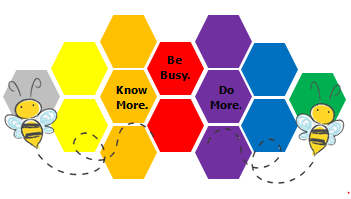Here we are using charcoal to sketch. Our inspiration for the sketches were caves.


We had a go at embellishing prints with oil pastels. Our inspiration was animal prints and tracks.

A calm Art & Design lesson practising observational drawing use a still-life.

We really enjoyed working with clay to make coil pots. Our inspiration was Ancient Greek pottery.

Art & Design
What makes a good artist?
- A good artist is resilient and persistent.
- A good artist is patient.
- A good artist is imaginative and creative.
- A good artist is dedicated.
- A good artist takes inspiration from others.
- A good artist is open-minded.
Intent
The National Curriculum for Art & Design aims to ensure that, by the end of Year 6, all pupils:
- produce creative work, exploring their ideas and recording their experiences;
- become proficient in drawing, painting, sculpture and other art, craft and design techniques;
- evaluate and analyse creative works using the language of art, craft and design; and
- know about great artist, craft makers and designers, and understand the historical and cultural development of their art forms.
Our intention at Devonshire Primary Academy is that children gain a wide-ranging knowledge of different art forms and styles, well-known/influential artists and practical art skills through the themes of drawing & sketching, colour, texture, form, print, pattern and digital media.
We aim to develop an enjoyment and passion for art & design in our pupils, as well as an understanding and acceptance of the validity and importance of all visual art forms, and a respect for the artistic expression of their peers and other artists.
Our Art and Design curriculum aims to go above and beyond the expectations of the National Curriculum, giving our children the opportunity to learn and experience art with a deeper knowledge and understanding. We want to ensure that our children have the very best start in life, to give them a chance to succeed throughout their educational journey with us and beyond, so that they truly believe that they can achieve anything that they set their mind to.
Implementation
At Devonshire Primary Academy, Art & Design is usually taught as a discreet lesson, although links have been established with the Computing, Geography and History curricula by creating long term plans with common threads (e.g. The Ancient Egyptians, South America, World War 2). These lessons are taught in the school’s Art & Design room, which is equipped with an extensive range of accessible, labelled equipment and media.
The Art & Design curriculum ensures students’ learning meets National Curriculum expectations and gives the children a broad and rich experience of different media, artists and art forms. Every child from Year 1 to Year 6 has a sketchbook and begins each new topic with an art investigation, based on a specific artist, art form or genre/style. The children investigate and research an artist or a piece of art, drawing inspiration for their own work and, hopefully, draw parallels with other familiar artists and art work.
Impact
The teaching of Art & Design is enjoyed by the staff and children alike. Teachers have high expectations of our pupils and the pupils have high aspirations to learn and succeed. Children’s learning and progress can be seen through quality evidence, both in their sketchbooks and their non-book based art work. Our children can use technical and artistic vocabulary accurately and are able to talk about their learning in a confident and knowledgeable way. Our children are constantly improving their knowledge of the world around them through artistic enquiry and can give their opinions about works of art, including their own. Our children demonstrate perseverance and resilience in continually evaluating and improving their own art practice.
What is a good artist?
- A good artist explores.
- A good artist researches.
- A good artist collaborates.
- A good artist observes.
- A good artist discovers.
- A good artist creates.
- A good artist takes risks.
- A good artist has fun experimenting.
Encouraging your Child at Home
- You can find art everywhere! Art can be found in magazines, books, posters, a scene through a window, prints on clothing, wallpaper etc.
- Visit galleries and museums. Grundy Art Gallery in Blackpool is free to the public all year round.
- Create your own artwork. You can create art without the need for expensive art equipment. Try drawing in the sand on the beach, making patterns with leaves in the park, recycling wrapping paper or magazines to make sculptures, collecting junk-modelling materials to make 3D artwork. Remember, you don’t always need brushes and paints to make art.
- Interact with your children. Sit down together and talk to your children whilst they are drawing; ask questions and find out about their ideas.
- Praise! If your child has made something they are proud of, put it on display and show them that you too are proud of their creation.
Useful Websites
- https://artsandculture.google.com/
- https://www.metmuseum.org/toah/
- https://www.natgeokids.com/uk/teacher-category/art/
- https://www.gosketch.co.uk/
- https://artuk.org/
- https://tate.org.uk/kids

